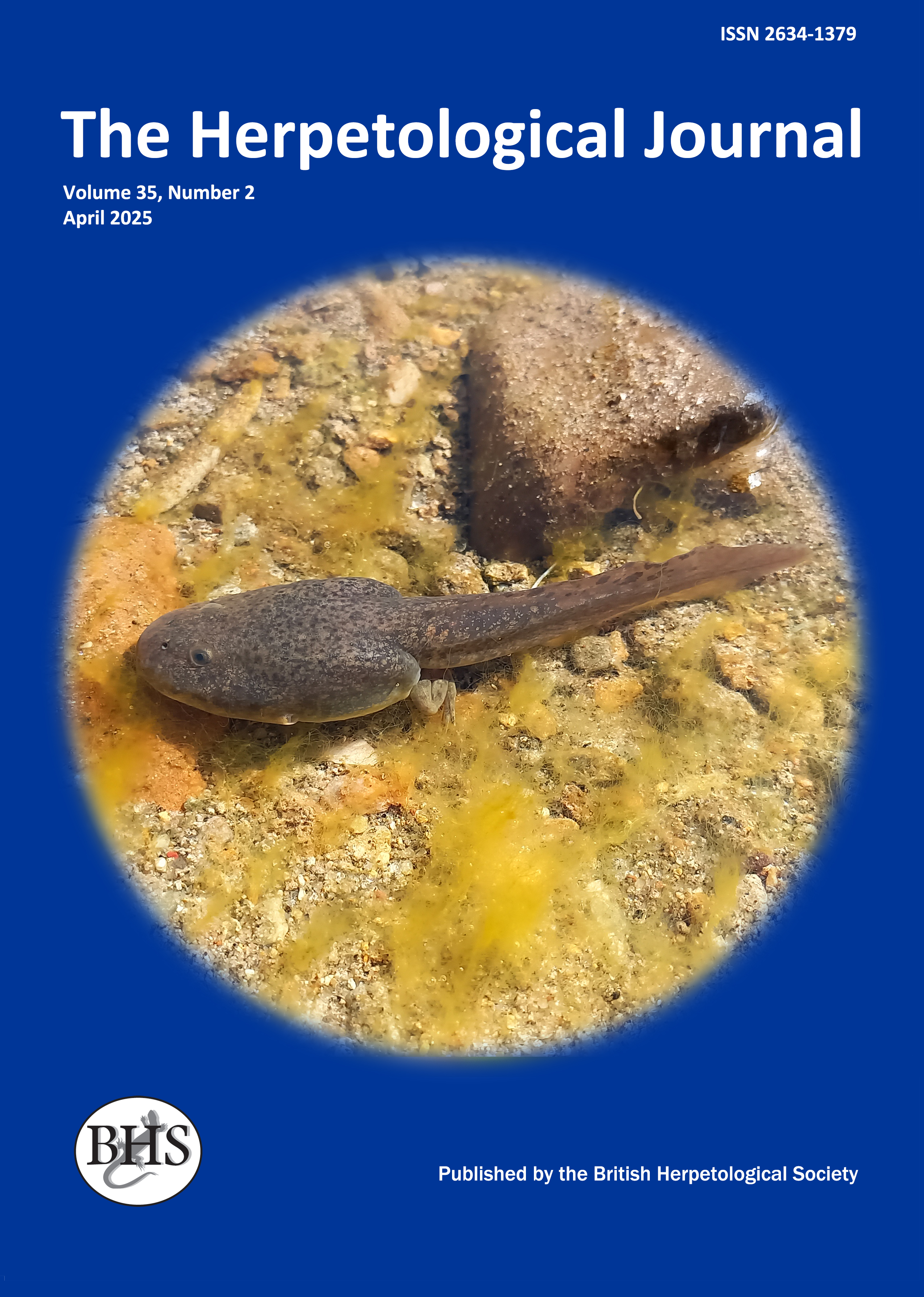
The Herpetological Journal
The Herpetological Journal is the Society's prestigious quarterly scientific journal. Articles are listed in Biological Abstracts, Current Awareness in Biological Sciences,Current Contents, Science Citation Index, and Zoological Record.
ISSN 0268-0130
2021 Impact Factor from Clarivate for the Herpetological Journal is 1.194, an increase of 0.332 from 2020.
pdf 02. Influence of farm characteristics and surrounding habitat on amphibian communities in Afrotropical cocoa
Subscription / purchase required
pp. 187-197
AUTHORS: Amber H. Mathie, Crinan Jarrett, Kowo Cyril, Tabe T.R. Claire, Diogo F. Ferreira & Luke L. Powell
ABSTRACT: Forests are being converted to agriculture throughout the tropics, driving declines in sensitive rainforest taxa. However, low-intensity agricultural systems, such as cocoa agroforestry, may provide refuges for biodiversity. Little is known about the suitability of these systems for vertebrate fauna in the Afrotropics, especially with regards to amphibians. Here, we contribute novel information on amphibian communities in African cocoa farms by investigating the effects of within-farm characteristics and surrounding habitats on the abundance and richness of amphibians. In August–September 2019, we surveyed amphibians in 15 cocoa farms and four primary forest sites in southern Cameroon, capturing 206 individuals of at least 29 species. Overall, responses of amphibians to within-farm characteristics and surrounding habitat varied between species, but at the community level the main responses were a decrease in number of captures with increasing ground vegetation height, and with increasing open agriculture and villages surrounding farms. Species also showed associations with canopy cover in farms (positive for three species), abundance of husk piles in farms (negative for three species), surrounding forest habitat (positive for two species and negative for one) and surrounding plantation or degraded forest habitat (positive for one species). Our results on the effects of surrounding habitat suggest that the composition of amphibian communities in cocoa farms may be largely influenced by the ability of species to disperse through neighbouring habitats. Additionally, we found that the relative abundance of amphibian species differed significantly between forest and cocoa: this effect appeared to be driven largely by tree frog species (genus Leptopelis), which were more abundant in forest habitats, suggesting that certain tree frog species may serve as an indicator of primary forest-like conditions. Given the current climate of agricultural intensification in Africa, our results contribute to the initial steps towards identifying amphibian-friendly agricultural practices.
Keywords: agroforestry, leaf litter, microhabitat, open agriculture, tropical forest

